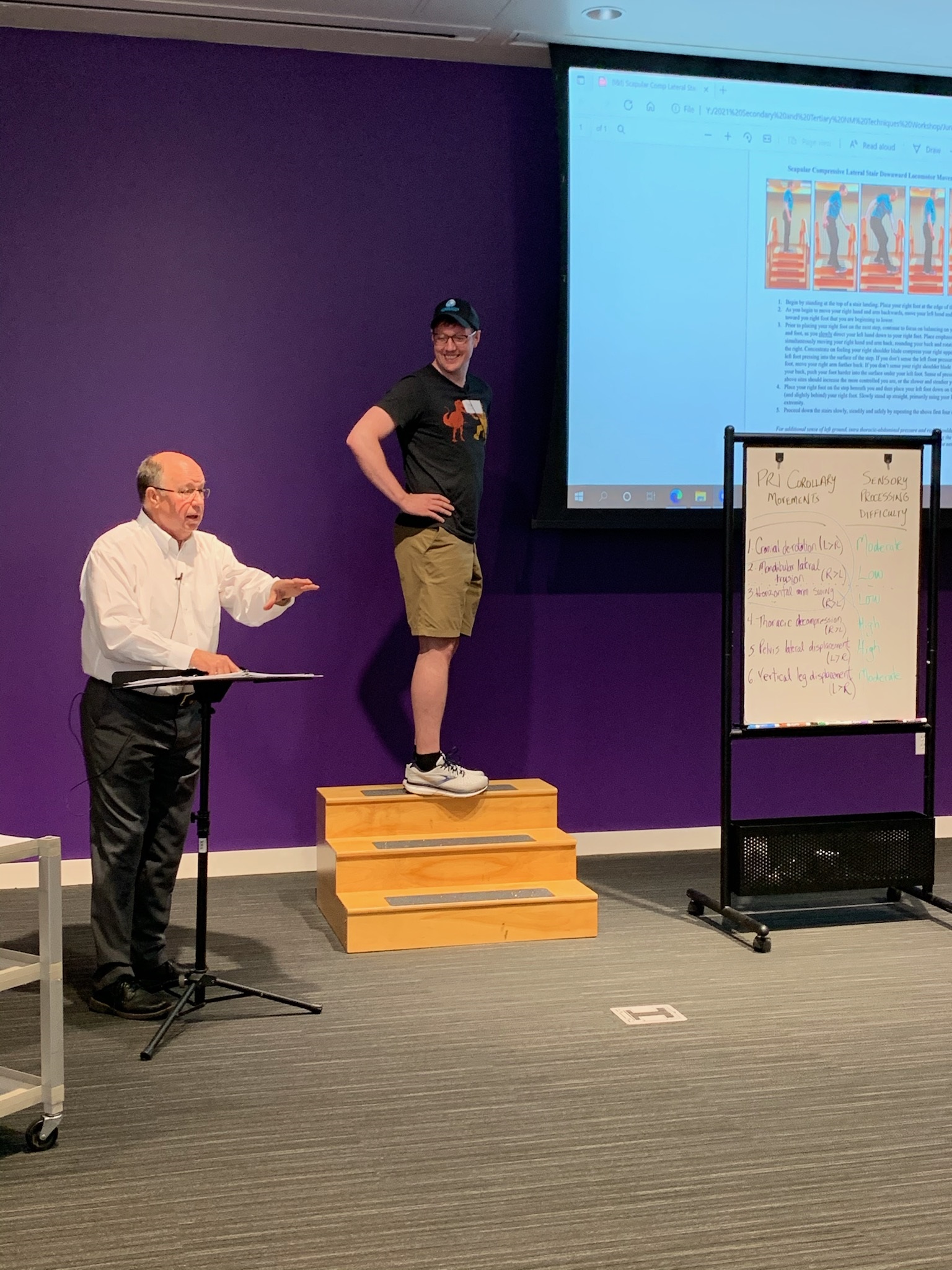This workshop was a first for Jen Platt and I. Opening the workshop with discussion on corollary consequence, correspondence and compensation allowed us to “look” at the top-down influences of PRI Corollary Movement in each of the 12 secondary and tertiary techniques that Jen chose for us to cover. She did a great job in organizing these techniques, laying them out and selecting techniques that offered the attendee a wide perspective of application. Normally, we do not list testimonials after a course. (You can find testimonials by courses by going to the ‘Programs and Courses’ site on our website). However, after reading the feedback that Hannah compiled, I felt it would be helpful for those who may be interested in taking this course in the future, as well as to read what the ‘first-time’ attendees had to say about it.

“I have already listened to at least 60% of the course material. I cannot tell you how much it helps to have the content available to go over again. This course put so many things together in regard to patterning. There were so many lightbulb moments into why things may fall apart for the patient at home with their exercise program because of the brain influence in regard to patterning. The word sense is so different than finding and feeling. Sensing something different in the body especially when sensing one thing can help the patient sense another area is HUGE in regard to making a program successful. Walking away from this course has had one of the most dramatic effects on putting the whole picture together, especially with the ability to go back and review it again. I hope that you can continue to offer the courses on zoom. I also wonder if any of the other recorded courses that were offered through zoom could ever be available as a take home course. It is nice to have that available as an option. Also wondering if Ron was ever going to put all the 33 corollary exercises together now that we understand the corollaries. I know that the other exercises are from other courses but we never had the corollaries with them. Thank you again for everything you all do!!!!”
“This course will allow me to progress all of my clients over the coming months and was a fantastic guide in sensory integration that I felt was a missing puzzle piece.”
“I have learned it in neuroanatomy but only in an abstract manner – now it becomes more meaningful for my work. Thanks!”
“I’ve always known the importance of multi sensory "sense", but this took my understanding a step further for sure”
“It feels like this course was a missing puzzle piece in my application. This made it much more straightforward to progress and cue clients”
“1. Greater confidence with technique selection 2. Deeper understanding & appreciation re: critiquing and cueing for a clients understanding of both positional and integrative sense”
“This course material will likely allow me help clients move to a higher level of motor learning much more efficiently and with less cognitive load (corollaries > references) especially in a fitness setting, but obviously also with rehab clients.”
“This is one of the MOST relevant courses offered by PRI to my area of practice in my opinion, moving away from more "attention intensive" movement practices towards integrated sense of corollaries will allow all of my clients, from pro athlete to rehab, to experience and sense the task at hand rather than trying to juggle a more cueing intensive task.”
“Thank you again for supporting the growth of PRI nation. We love you and this course was fantastic. When entering a black hole, one needs a guide named Ron Hruska. I can feel the effort, the labor of love, the hard work that has been put into this course (and all other courses). Thank you PRI team for continuing to lead the way. You inspire me to be better. Much love from Alpine PT in Seattle.”

I could not give this course, the way it was presented, without the direct input, production, and guidance that Jen provide both me and the audience. So grateful for her many roles she plays in this Institute, but now, because we know each other so well and the overall intent so well, the delivery and message is seamless, sincere and solid. This truly was the Institute’s first multisensory movement workshop that reflected the strength of the corollary movement sense needed for natural cognitive processing built around vestibular-ocular reflexive correlations. We also could not have made this workshop the ‘virtual reality’ workshop it was without the live presence of Amy Morris, PT, Phil DeNigris, CSCS, Rua Gilna, CPT, SFG1, PN1, and Dave Drummer, DPT, PRC. Their patience with my Socratic style of teaching and their willingness to objectively communicate what they felt, sensed, experienced and struggled with made multi-dimensional processing understandable and appreciable.
Thank you again for coming to Lincoln and participate in the manner in which each and every one of you did.


